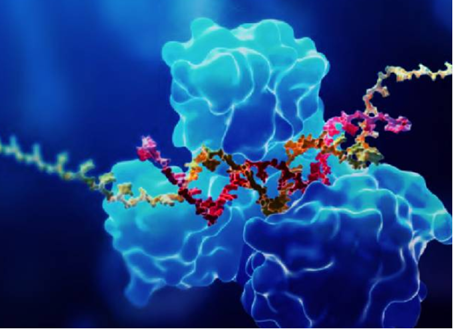Peptide therapeutics bridge small molecules and biologics, offering high target selectivity with tunable safety. Yet their drug metabolism and pharmacokinetics (DMPK) are shaped by rapid proteolysis, limited permeability, and brisk renal clearance—factors that can derail otherwise promising biology. Early, fit-for-purpose DMPK work helps teams design stable sequences, choose delivery routes, and quantify exposure with confidence. In this article, we’ll outline a practical, regulator-ready guidance to de-risk peptide programs and accelerate translation from discovery to clinic.

Key DMPK insights for peptide drug development
As pipelines expand, success hinges on anticipating liabilities and stacking incremental fixes that hold up in real matrices and real patients.
Design for protease resistance without losing potency.
Peptides face endo- and exopeptidases in plasma, liver, kidney, and gut. Stabilize sequences with cyclization (head-to-tail, stapling), D-amino acids at labile sites, terminal capping, N-methylation, and non-natural residues. Conjugation tactics—PEGylation, lipidation, albumin binders, or Fc/albumin fusions—shield cleavage sites and slow clearance. Iterate with in vitro stability panels (plasma, liver S9, hepatocytes) linked to quick in vivo screens so structure tweaks map directly to half-life gains.
Absorption and route selection set the exposure ceiling.
Most peptides are injected because oral bioavailability is low. For subcutaneous dosing, quantify flip-flop kinetics and site effects (abdomen vs. thigh). Explore formulation enhancers (permeation agents, enzyme inhibitors) and depot systems to smooth Cmax while sustaining exposure. For oral candidates, combine enteric protection with transient permeation strategies and design against first-pass cleavage. Intrathecal or intranasal routes can be considered for CNS targets when BBB penetration is limited.

Distribution and tissue targeting determine efficacy and risk.
Expect modest volumes of distribution driven by polarity and size; binding to albumin or target tissues can expand apparent Vd. Use receptor occupancy, imaging, or microdialysis where feasible to connect plasma levels to biophase exposure. For CNS programs, pair plasma PK with CSF sampling to understand central/peripheral gradients and refine dose frequency. Minimizing non-specific tissue uptake reduces off-target pharmacology and improves therapeutic index.
Clearance, half-life extension, and PK tailoring.
Renal filtration dominates for small and mid-size peptides; hepatic peptidases and transporters can add pathways. Extend half-life by increasing hydrodynamic radius (PEG/fusions), reversible albumin binding (fatty-acid chains, engineered tags), or sustained-release depots. Watch for exposure nonlinearity from target-mediated drug disposition at higher affinity or dose levels. Report CL, t½, and AUC alongside time-above-threshold metrics that reflect pharmacology better than peak-centric endpoints.
Bioanalysis that fits sequence and matrix complexity.
LC-MS/MS remains the workhorse using signature peptides or intact-mass workflows with stable-isotope internal standards; ligand-binding assays (LBA) support longer peptides or when sensitivity demands it. Hybrid LBA–LC-MS/MS can improve selectivity in tough matrices like CSF. Validate for sensitivity, selectivity, matrix effects, and carryover at micro-volumes to enable pediatric or serial CSF sampling. Where elemental tags are employed (e.g., lanthanide labels), ICP-MS/MS offers highly sensitive, element-specific confirmation.
Immunogenicity, safety, and translational modeling—close the loop.
Although many peptides are less immunogenic than proteins, sequence novelty, aggregates, and impurities still matter. Implement a tiered ADA strategy (screen → confirm → characterize) and add neutralizing assays for receptor/ligand blockers. Integrate ADA status with PK to explain unexpected clearance or loss of exposure. Build exposure–response and population PK models early, then refine with first-in-human data to select doses and predict adherence-friendly regimens.
Conclusion
So, peptide dmpk is a game of constraints: protect against proteases, enable absorption, steer distribution, and slow clearance without sacrificing potency or safety. Programs that pair smart sequence chemistry with fit-for-purpose bioanalysis and integrated PK/PD modeling make faster, cleaner decisions. By validating routes, tuning half-life extension, and tracking immunogenicity alongside exposure, teams convert elegant biology into durable clinical performance and prepare inspection-ready packages for regulatory review.
